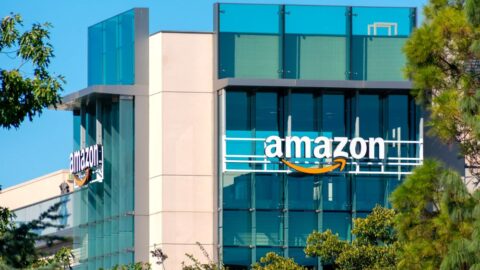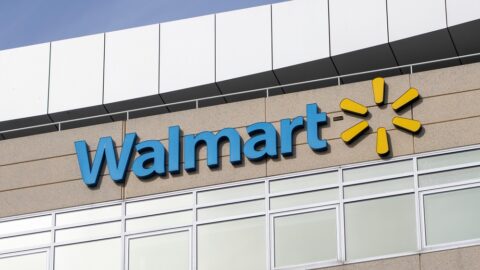At Walmart’s annual shareholder meeting on June 3, CEO Doug McMillon shared his vision for the company, urging employees to “reimagine retail” again. However, many may take that as code for “adapt to the conditions Amazon has set.”
McMillon revealed at the shareholder meeting that Walmart is piloting online grocery delivery in partnership with on-demand services Uber, Lyft and Deliv, a new direction for a retailer that has continued to hold on to its industry-leading position despite ongoing challenges in establishing its omnichannel identity.
For the past year, Walmart has been testing a two-day shipping service to rival Amazon Prime called ShippingPass, but the service hasn’t officially rolled out to consumers yet and company representatives have been mum on the expected launch date.
While Walmart has long been the U.S.’s largest retailer in both size and sales, MKM Partners analyst Rob Sanderson believes that Amazon could take that top spot by 2020. Amazon’s influence within the retail industry is well documented at this stage, but with Prime users now earning the e-Commerce giant an annual operating profit of more than $115 per member (according to Carlos Kirjner of Bernstein Research), Walmart has even more reasons to be looking over its shoulder.
E-Commerce Continues To Underperform Despite Increased Investments
Walmart’s e-Commerce sales weren’t exactly what the retailer had hoped for as it closed out 2015, with its Q4 showing only an 8% uptick for the holiday season. Even as the retailer outperformed most of its traditional competitors to start Q1, e-Commerce still only increased 7%, marking the fifth straight quarter the retailer’s digital sales growth declined.
Presumably as a response to the continued slowdown, Walmart is in the midst of a hefty hike in e-Commerce spending. This year, Walmart is expected to spend $900 million on e-Commerce operations, more than the $700 million dedicated to online initiatives in 2015. In 2017, the total is expected to leap again to $1.1 billion.
Walmart remains the second-largest online retailer after Amazon, but it’s not a close race: Walmart’s digital sales of $12.5 billion within the past year are a fraction of Amazon’s $82.8 billion, according to eMarketer. Walmart is also lagging compared to omnichannel competitors such as Target, which boosted its digital sales 23%.
With Walmart making plans to close 269 stores in 2016, it’s a reminder that no retailer is immune to shuttering brick-and-mortar locations. Considering that Walmart essentially built its entire empire on affordable products offered in a big box physical store, the retailer will have to adjust to life in which the store isn’t the centerpiece of every single transaction.












